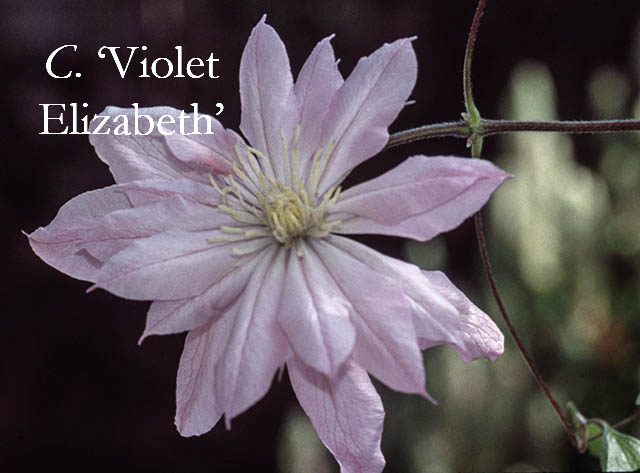I’m sure if you’re a regular visitor to my website you realize I adore clematis. As much as I wish I could always just shine a positive light on my favorite genus I have decided it is necessary that I discuss the problem of stem rot (most commonly referred to as “wilt”).
One of the most upsetting things about owning clematis is walking out into your garden and seeing that your baby (usually a new plant… especially the little 2-inch preemie clematis) has succumbed to stem rot. This vascular ailment causes the clematis stem(s) to become extremely weak, so it droops, which makes the plant appear like it desperately needs water. Eventually, the leaves and flower buds turn brown and shrivel up and die. This wilting malady is best defined as a collapse (either totally or partially) of a clematis due to fungus.
I must confess, even after experiencing it over the years, I am still just as devastated as I was when it first happened to my Clematis ‘Proteus’ in 1994. I didn’t have anyone to ask what to do so I just left it alone. I’m not sure why I decided to leave my C. ‘Proteus’ in the container and wait, but lo and behold, in only 11 months up sprouted a new stem and it has flourished each year since. I’m so happy that I didn’t hold a funeral immediately upon its supposed demise. Despite my occasional delusions of invincibility stem rot happens. Stem rot is a fairly common occurrence in the genus clematis (especially with the large-flowered cultivars belonging to the Patens and Jackmanii Groups). Bottom line: It is one of the crosses we must bear with ownership of these exquisite flowering vines.
For information on how to deal with Stem Rot (aka Wilt) visit: Rx for Stem Rot (aka Wilt)
For information on how to deal with Stem Rot (aka Wilt): Rx for Stem Rot (aka Wilt)
